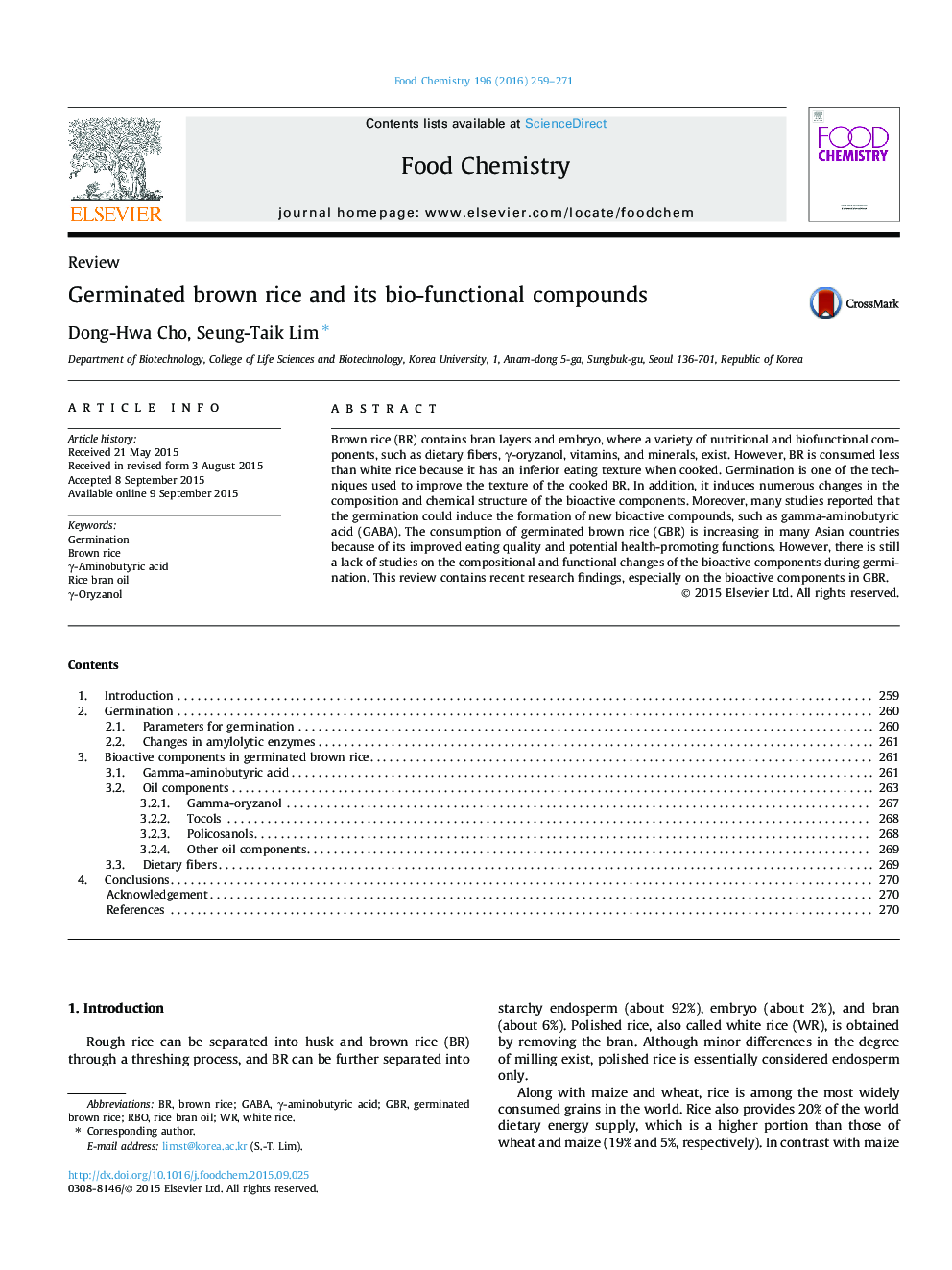| Article ID | Journal | Published Year | Pages | File Type |
|---|---|---|---|---|
| 1184121 | Food Chemistry | 2016 | 13 Pages |
•Physical and metabolic events during germination of brown rice were reviewed.•Various bio-active compounds in germinated brown rice were summarized.•Procedures to control bio-active compounds in germinated rice were introduced.•Physiological effects of germinated brown rice were discussed.
Brown rice (BR) contains bran layers and embryo, where a variety of nutritional and biofunctional components, such as dietary fibers, γ-oryzanol, vitamins, and minerals, exist. However, BR is consumed less than white rice because it has an inferior eating texture when cooked. Germination is one of the techniques used to improve the texture of the cooked BR. In addition, it induces numerous changes in the composition and chemical structure of the bioactive components. Moreover, many studies reported that the germination could induce the formation of new bioactive compounds, such as gamma-aminobutyric acid (GABA). The consumption of germinated brown rice (GBR) is increasing in many Asian countries because of its improved eating quality and potential health-promoting functions. However, there is still a lack of studies on the compositional and functional changes of the bioactive components during germination. This review contains recent research findings, especially on the bioactive components in GBR.
